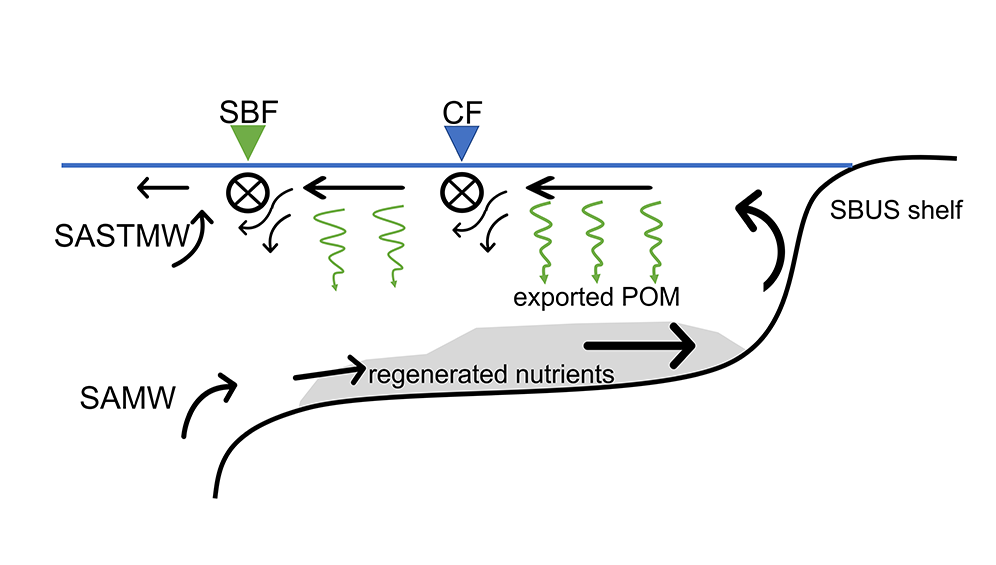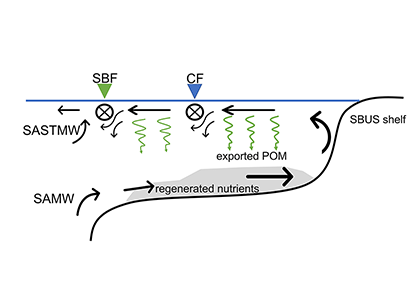The southern Benguela upwelling system (SBUS) off southwest Africa is an exceptionally fertile ocean region that supports valuable commercial fisheries. The productivity of this system derives from the upwelling of nutrient-rich Subantarctic Mode Water, and from the concurrent entrainment of nutrients regenerated proximately on the expansive continental shelf. The SBUS is prone to severe seasonal hypoxic events that decimate regional fisheries, occurrences of which are inextricably linked to the inherent nutrient dynamics. In a study recently published in JGR Oceans, the authors sought to understand the mechanisms sustaining elevated concentrations and seasonally-variable distributions of nutrients in the SBUS, in relation to the subsurface oxygen content. Inter-seasonal measurements of nutrients and nitrate isotope ratios across the SBUS in 2017 revealed that upwards of 48% (summer) and 63% (winter) of the on‐shelf nutrients derived from regeneration in situ. The severity of hypoxia at the shelf bottom, in turn, correlated with the incidence of regenerated nutrients. The accrual of nutrients at the shelf bottom appears to be aided by hydrographic fronts that restrict offshore transport, trapping regenerated nutrients on the SBUS shelf and increasing the pool of nutrients available for upwelling – ultimately contributing to hypoxic events. This study underscores the need – if we are to develop a mechanistic and predictive understanding of hypoxia in the SBUS and elsewhere – to elucidate the role of shelf circulation in promoting the accrual of regenerated nutrients on the continental shelf. The next step is to combine new and existing observations with quantitative simulations to further interrogate the coupled physical-biogeochemical mechanisms that modulate the intensity of hypoxia.

Figure caption: Schematic of proposed nutrient-trapping mechanism: Deep nutrient-rich Subantarctic Mode Water (SAMW) acquires more nutrients as it passes over the shelf sediments from the regeneration of exported particulate organic material (POM). The production of this POM is fueled by nutrients stripped from the surface waters advecting back off-shore. The thickness of the arrows represents nutrient concentrations. Triangles indicate the positions of the Shelf Break Front (SBF) and Columbine Front (CF), coincident with an observed subduction of the Ekman layer and downwelling at the inner front boundary.
Authors
Raquel Flynn (University of Cape Town)
Julie Granger (University of Connecticut)
Jennifer Veitch (South African Environmental Observation Network)
Samantha Siedlecki (University of Connecticut)
Jessica Burger (University of Cape Town)
Keshnee Pillay (South Africa Department of Environment, Forestry and Fisheries)
Sarah Fawcett (University of Cape Town)




